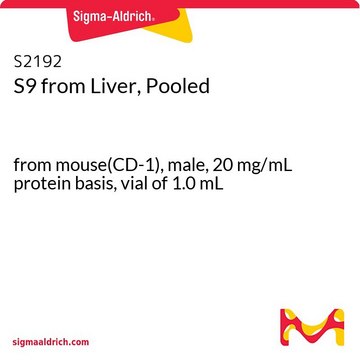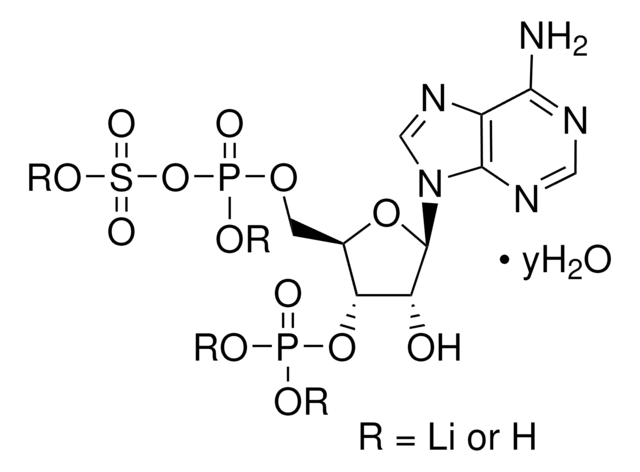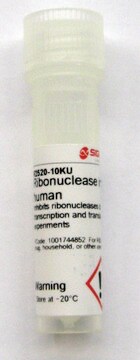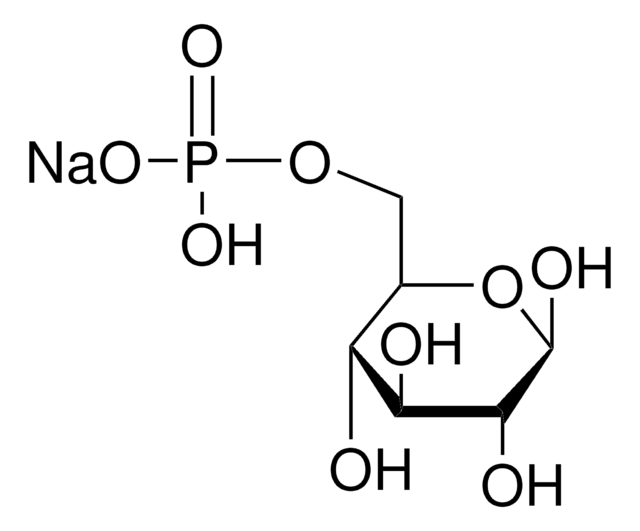S2442
S9 from Liver, Pooled
from human
Synonym(s):
Liver S9 Fraction, S9 Liver Extract
Sign Into View Organizational & Contract Pricing
All Photos(1)
About This Item
UNSPSC Code:
12161501
NACRES:
NA.47
Recommended Products
biological source
human
Quality Level
packaging
vial of ~20 mg
UniProt accession no.
shipped in
dry ice
storage temp.
−70°C
Gene Information
human ... RPS9(6203)
Looking for similar products? Visit Product Comparison Guide
Application
Pooled S9 fractions from liver have been used for genotoxicity experiments.
Biochem/physiol Actions
The hepatic S9 pools from a variety of biological sources represent the post-mitochondrial supernatant fraction from homogenized liver. Known to be a rich source of drug metabolizing enzymes including P-450, these pools are useful in the study of xenobiotic metabolism and drug interactions.
The hepatic S9 pools from a variety of biological sources represent the post-mitochondrial supernatant fraction from homogenized liver. They are known to be a rich source of drug metabolizing enzymes including P-450. S9 pools are useful in the study of xenobiotic metabolism and drug interactions. They are used in the Ames test, which is a method that uses bacteria to test if a given chemical causes mutations in the genetic material of a given test organism.
Storage Class Code
10 - Combustible liquids
WGK
WGK 2
Flash Point(F)
Not applicable
Flash Point(C)
Not applicable
Personal Protective Equipment
dust mask type N95 (US), Eyeshields, Gloves
Choose from one of the most recent versions:
Already Own This Product?
Find documentation for the products that you have recently purchased in the Document Library.
Customers Also Viewed
The Ames Salmonella/microsome mutagenicity assay.
Mortelmans K and Zeiger E
Mutation Research (2000)
An improvement of the Ames test using a modified human liver S9 preparation.
Hakura A
Journal of Pharmacological and Toxicological Methods, 169-172 (2001)
Implementation of the Three Rs in the Human Hazard
Assessment of Brazilian Medicinal Plants: An Evaluation
of the Cytotoxic and Genotoxic Potentials of Dipteryx
alata Vogel
Assessment of Brazilian Medicinal Plants: An Evaluation
of the Cytotoxic and Genotoxic Potentials of Dipteryx
alata Vogel
Natalia M. Esteves-Pedro
Alberta RN / Alberta Association of Registered Nurses (2011)
A conjugate of pyridine-4-aldoxime and atropine as a potential
antidote against organophosphorus compounds poisoning
antidote against organophosphorus compounds poisoning
Jasna Lovric
Acta Biochimica Polonica, 58(2) (2011)
Our team of scientists has experience in all areas of research including Life Science, Material Science, Chemical Synthesis, Chromatography, Analytical and many others.
Contact Technical Service










